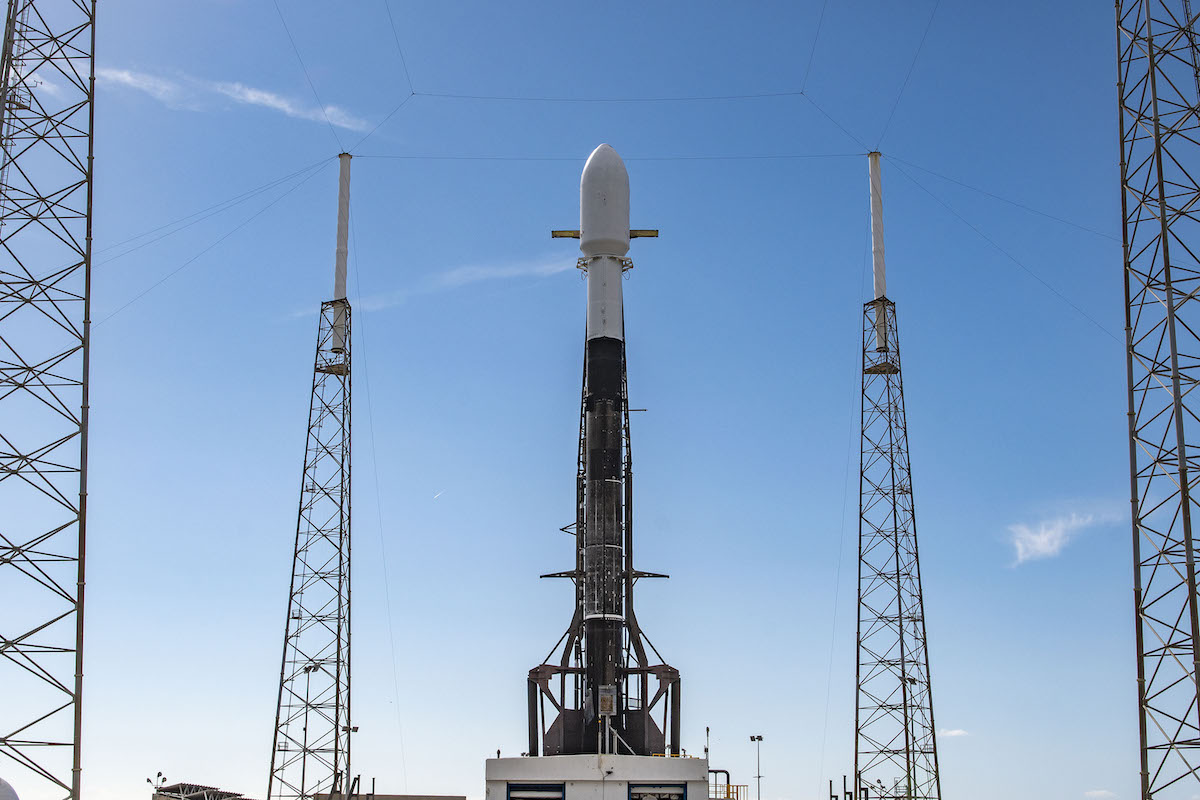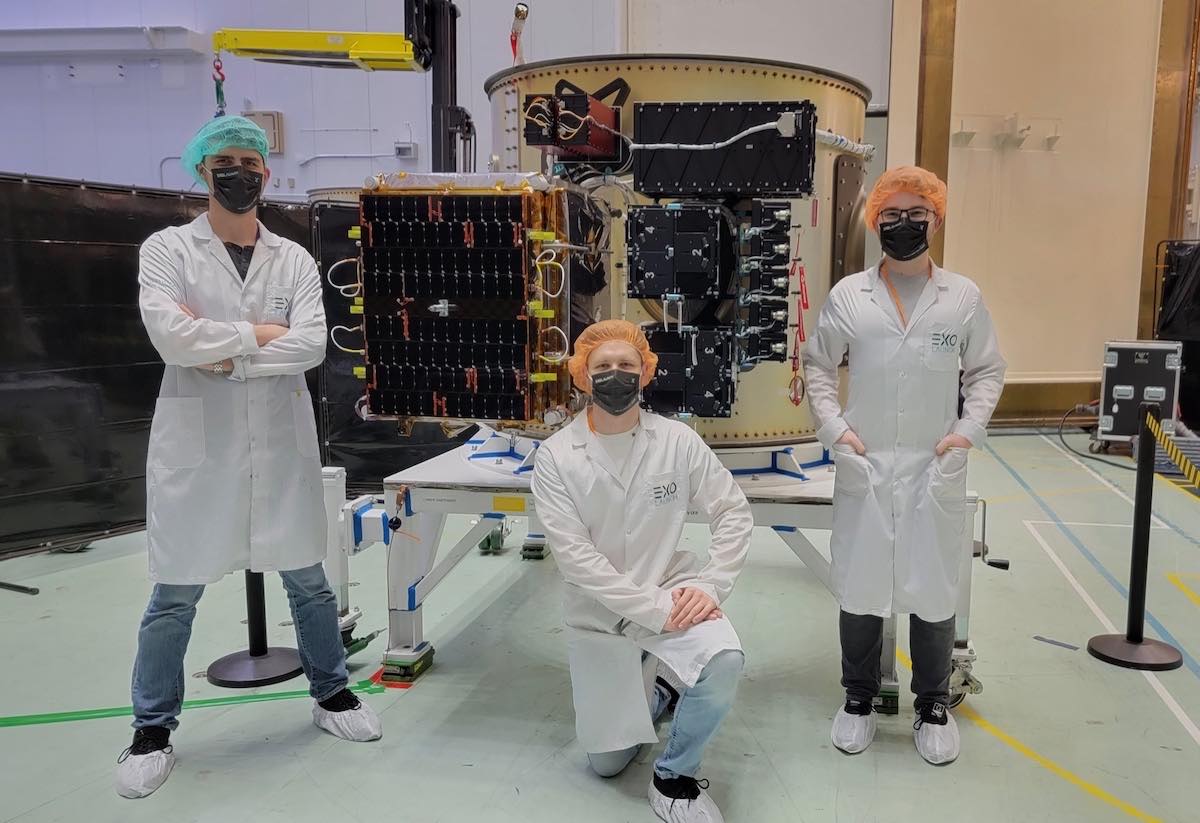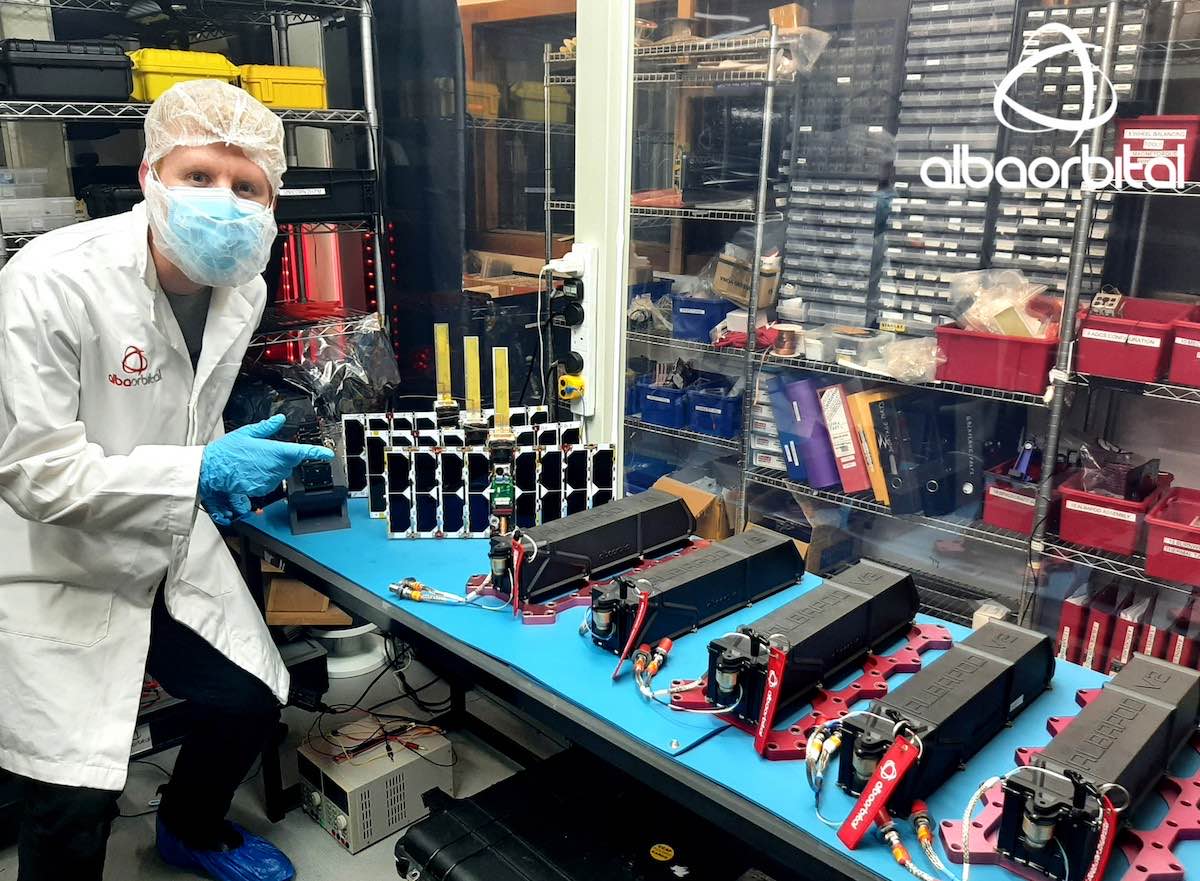
With its small satellite launch business booming, SpaceX is set to double its cadence of dedicated rideshare missions this year, beginning with the liftoff of a Falcon 9 rocket Thursday from Cape Canaveral with 105 spacecraft for customers in 20 countries.
A 229-foot-tall (70-meter) Falcon 9 rocket is awaiting launch from pad 40 at Cape Canaveral Space Force Station at 10:25:39 a.m. EST (1525:39 GMT) Thursday.
SpaceX has a 29-minute launch window Thursday, and forecasters predict a 70% chance of favorable conditions for liftoff. The primary weather concerns are associated with cloudiness that could violate the U.S. Space Force’s range weather constraints.
The Falcon 9 will be powered by a reusable first stage flown on nine prior missions, beginning with SpaceX’s first launch to carry astronauts — NASA’s Crew Dragon Demo-2 mission — in May 2020. For its 10th launch, the booster will head southeast Cape Canaveral, then turn south to fly parallel to the east coast of Florida, taking aim on a polar, sun-synchronous orbit.
The cylindrical booster stage, scarred with dark exhaust residue from its nine previous launches and landings, will shut down its nine Merlin engines at T+plus 2 minutes, 19 seconds. A “boost-back” burn using three of the rocket’s engines will zero out the first stage’s supersonic downrange velocity, allowing it to reverse course and return to Cape Canaveral for landing about eight-and-a-half minutes after launch.
Four landing legs will extend from the base of the rocket as it descends toward Landing Zone 1, one of SpaceX’s two rocket landing pads at the military launch station.
SpaceX typically lands Falcon 9 boosters on drone ships on missions carrying heavy cargo into space, or flights hauling payloads to high-altitude orbits.
On launches with lighter payloads, the booster has enough of a propellant reserve to turn itself around using a boost-back burn just after stage separation. That will be the case for the launch Thursday.
SpaceX’s upper stage, meanwhile, will fire its single Merlin engine for six minutes to reach a parking orbit as it flies over the Florida Straits, Cuba, and the Caribbean Sea. After coasting over Antarctica, the second stage will reignite its engine for a brief two-second firing at T+plus 55 minutes to reach the mission’s planned orbit to begin a 28-minute sequence of satellite deployments.
The first of the mission’s satellite payloads will separate from a carrier pod more than 59 minutes into the mission. The last of the payloads will be released at T+plus 1 hour, 27 minutes.
The launch of SpaceX’s third “Transporter” rideshare mission Thursday follows two similar multi-payload flights arranged by SpaceX last year.
The first mission, Transporter 1, deployed 143 small satellites in January 2021. The Transporter 2 launch in June carried 88 small spacecraft, but exceeded the weight of the payloads launched on Transporter 1.

The Transporter 3 mission also marks the fourth launch from Cape Canaveral since August 2020 to fly on a southern trajectory and target a polar orbit. Before 2020, the most recent polar orbit launch from Florida’s Space Coast was in 1969.
Most U.S. launchers flying on polar orbit missions have typically departed from Vandenberg Space Force Base in California, which offers southerly flight paths over the Pacific Ocean. Launches toward polar orbits from Cape Canaveral require “dog-leg” maneuvers, or turns, to avoid flying over South Florida.
SpaceX announced its small satellite rideshare launch service in 2019. After the first two Transporter missions in 2021, SpaceX intends to launch as many as four dedicated ridehsare flights on Falcon 9 rockets this year, doubling the rate of Transporter launches from about one every six months to one every three-to-four months.
There’s high demand for the rideshare launch service. Several SpaceX customers have said the price for a slot on a Transporter mission is unmatched in the launch industry.
On its website, SpaceX says it charges customers as little as $1 million to launch a payload of 440 pounds (200 kilograms) on a dedicated rideshare flight to sun-synchronous orbit. The price is enabled by cost reductions from reusing Falcon 9 rocket hardware.
Companies like Berlin-based Exolaunch, the Italian launch broker D-Orbit, and Spaceflight in Seattle reserved ports on the Transporter 3 payload stack, then divided that capacity among multiple small satellite customers.
D-Orbit has its own satellite carrier mounted on the Transporter 3 payload stack. The company’s ION SCV004 vehicle will separate from the Falcon 9 rocket to later release its own satellite passengers.
The payloads on-board the Transporter 3 mission range from smaller than a soda can to the size washing machine.
The biggest of the group is the Ukrainian Sich 2-1 satellite, a 375-pound (170-kilogram) government-funded Earth-imaging spacecraft delayed for years by political and economic turmoil in Ukraine, largely driven by the country’s conflict with Russia.
The Sich 2-1 satellite, also named Sich 2-30, was built by the Ukrainian company Yuzhnoye. It hosts a medium-resolution imaging payload to take pictures of Earth’s surface in visible and near-infrared wavelengths, collecting data useful in urban planning, crop management, and environmental monitoring.
Radar remote sensing satellites are also part of the Transporter 3 payload package.
Two satellites reach for Finland’s ICEYE and the U.S. company Capella are stowed inside the Falcon 9 rocket’s payload shroud. Both companies are building out fleets of small satellites using radar beams to regularly map the world’s land masses, oceans, and ice sheets.
Radar imaging doesn’t provide as much color or detail as optical remote sensing, but radar satellites come with the benefit of being sensitive day or night, and in all weather conditions.
Images from ICEYE and Capella are sharp enough for analysts to pick out ships, buildings, and other features on Earth’s surface smaller than 1 meter (3 feet) in size.
ICEYE’s two new satellites join 13 others already in the company’s constellation. Each satellite weighs about 187 pounds (85 kilograms), and carries a radar antenna that will unfold once it’s in orbit.
Capella, a competitor to ICEYE, is also adding two satellites to its fleet with the Transporter 3 mission. The new additions, each about 220 pounds (100 kilograms) at launch, will join five satellites already in Capella’s commercial fleet providing radar imagery to the U.S. military and other customers.
Another rdar remote sensing company, Umbra, also has a satellite on-board the Transporter 3 mission. Umbra’s second satellite follows a first spacecraft launched on Transporter 2 last year.
Like the ICEYE and Capella satellites, the 143-pound (65-kilogram) Umbra satellite will unfurl a radar antenna after separating from the Falcon 9 rocket. Umbra is also building out a fleet of satellites, which it says will be capable of capturing the highest-resolution radar images of any commercial constellation at just 6 inches (15 centimeters).

The Transporter 3 mission is also hauling 44 small SuperDove optical imaging satellites into orbit for Planet, which owns the industry’s largest fleet of Earth observation spacecraft. The San Francisco-based company said it will have more than 240 satellites in orbit with the new flock of SuperDoves taking off Thursday.
The SuperDove satellites are about the size of a shoebox, and they form the backbone of Planet’s constellation mapping all of Earth’s land masses every day. “This unprecedented capability provides our customers with daily data about Earth resources and global events,” the company said in an update posted on its website.”
The Transporter 3 mission is the first for Planet and SpaceX under a new multi-launch agreement signed last year, cinching SpaceX’s position as Planet’s “go-to launch provider” through the end of 2025.
Other satellites on the Transporter 3 launch include eight “Tevel” CubeSats built by students in Israel. Led by the Herzliya Science Center, the Tevel satellites will support amateur radio communications in low Earth orbit.
There are five small CubeSats on the mission for Spire Global, which operates a constellation of smallsats collecting weather and ship tracking data. Four CubeSats are on-board for Kepler Communications, a Canadian company deploying a data relay satellite network.
Three MDASat nanosatellites from South Africa will also launch on the Transporter 3 mission. They are part of a nearly $2 million government-backed project to detect, locate, and track maritime traffic near South African coastal zones.
Other companies with satellites on the Transporter 3 mission include Sen, a British firm launching its first CubeSat spacecraft in a planned fleet to provide high-definition video of Earth. There’s also a CubeSat from the Norwegian University of Science and Technology, which intends to use a color-sensitive hyperspectral imager to monitor oceans.
Lunasonde, a company based in Tucson, Arizona, is launching the first satellite in its planned Gossamer constellation designed for subsurface imaging, with the ability to help locate underground water, mineral deposits, and other resources.
SpaceX’s Transporter 3 launch is also carrying a small satellite from the French startup UnSeenLabs, which is in the maritime surveillance business. A CubeSat from Dubai will launch to help officials monitor and manage the city’s electricity and water networks,
A CubeSat named NuX 1, owned by NuSpace in Singapore, will demonstrate data relay technologies and a lower-power Hall effect thruster. A CubeSat from Taiwan, named IRIS A, has a similar communications tech demo purpose.
Another spacecraft to be deployed from the Falcon 9 rocket is the ION SCV004 CubeSat carrier, owned by the Italian company D-orbit, which itself will release six nanosatellites after separating from the rocket. The payloads on D-Orbit’s carrier include four CubeSats from the Polish company SatRevolution and the VZLUSat 2 technology demonstration satellite from the Czech Aerospace Research Center.
A CubeSat payload from the University of Southern California, named Dodona, will also be packed onto D-Orbit’s ION satellite carrier.
The Dodona satellite carries instrumentation and software for Lockheed Martin’s La Jument mission, which will help spacecraft designers mature artificial intelligence and machine learning technologies.
The instruments on-board include optical and infrared cameras, a soft-defined payload to demonstrate on-orbit cyber threat detection capabilities, and an app to allow the satellite’s computer to automatically enhance the quality of an image, Lockheed Martin said.
The smallest satellites buttoned up for launch on the Transporter 3 mission are so-called PocketQubes, tiny satellites that weigh between 1 and 2 pounds.
According to a tally of the payloads provided by SpaceX and mission customers, there are 21 PocketQubes on the Transporter 3 launch for customers in Spain, the United Kingdom, the Netherlands, Turkey, Argentina, Brazil, Nepal, and the United States.
Their missions range from education and training of future engineers, to technology testing, communications, and remote sensing.
Some of satellites assigned to the Transporter 3 launch were pulled off the mission after a Sherpa space tug, supplied by the rideshare launch broker Spaceflight, suffered a propellant leak during pre-flight processing at Cape Canaveral in December.
The Sherpa tug was removed from the Transporter 3 payload stack, and the satellites it was supposed to deploy will be reassigned to other missions, Spaceflight said.
One of the affected CubeSats, VZLUSat 2 from the Czech Republic, was able to be reconfigured for a ride on the D-Orbit deployer on the same Transporter 3 launch.
Email the author.
Follow Stephen Clark on Twitter: @StephenClark1.
